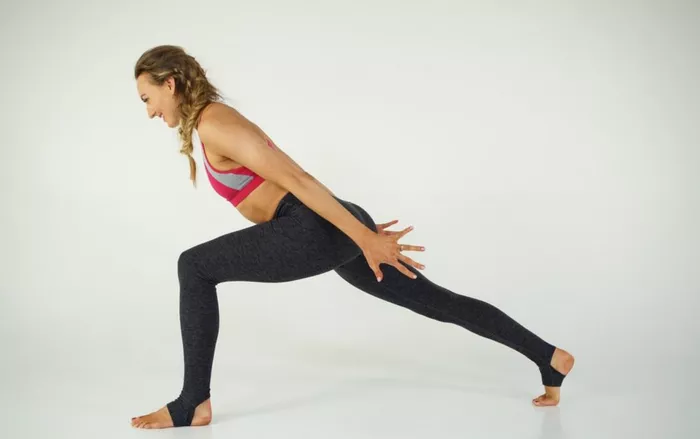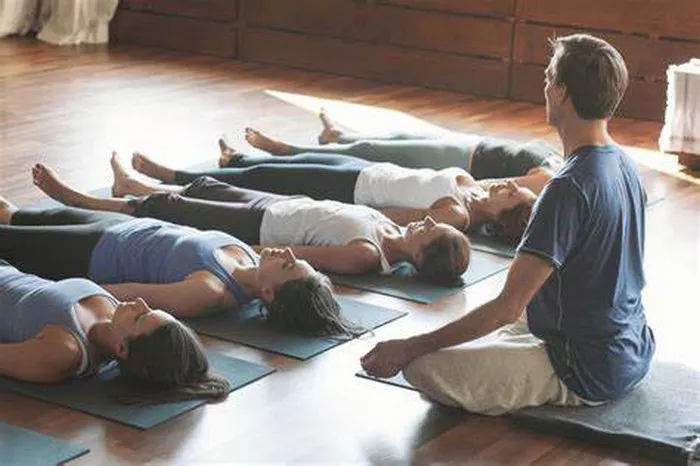Shoulderstand, or Sarvangasana, is a highly revered pose in yoga, often referred to as the “queen of asanas” because of its numerous health benefits. This inverted pose involves supporting your body weight on your shoulders while lifting your legs and torso to form a straight line, with the chin tucked into the chest. It is considered an advanced pose that requires strength, flexibility, and proper technique to perform safely.
While Shoulderstand has a host of benefits, including improving circulation, boosting the immune system, and enhancing spinal health, it is not suitable for everyone. In certain cases, this pose can pose risks, especially if done improperly or by individuals with certain medical conditions. This article will explore the various factors that determine who should avoid Shoulderstand and why it may be contraindicated in certain cases.
Understanding Shoulderstand and Its Benefits
Before delving into the contraindications, it’s important to understand what Shoulderstand entails and why it is considered beneficial in yoga practice.
Shoulderstand is an inverted posture that promotes blood flow to the upper body, including the brain, which can have a range of benefits for the body and mind. The pose stretches the shoulders, improves spinal alignment, and stimulates the thyroid and parathyroid glands. When performed correctly, it can also reduce the appearance of varicose veins, improve digestion, and help to balance the endocrine system.
Other benefits of Shoulderstand include:
Enhanced Circulation: The inversion allows blood to flow toward the upper body and head, improving circulation to vital organs and tissues.
Thyroid Stimulation: The pose stimulates the thyroid gland, which plays a key role in regulating metabolism and energy.
Improved Posture: Shoulderstand encourages spinal alignment and strengthens the muscles along the spine.
Mental Calmness: Inversions help to calm the nervous system, promote deep relaxation, and reduce stress.
However, despite these impressive benefits, the pose is not without its risks. Several conditions and factors can make Shoulderstand unsafe or inappropriate for certain individuals.
1. Neck Issues or Cervical Spine Problems
Shoulderstand places significant weight on the neck, particularly the cervical spine, which can lead to serious injury if there is any pre-existing condition. Individuals with neck pain, stiffness, herniated discs, or any cervical spine disorders should avoid this pose. In Shoulderstand, the neck is supposed to remain supported by the hands, but even with proper technique, the risk of strain is high if the neck is weak or misaligned.
Those with conditions like:
- Cervical spondylosis (age-related wear and tear of the neck’s vertebrae)
- Herniated discs or bulging discs in the neck
- Pinched nerves in the cervical spine
- Neck sprains or strains
should not attempt Shoulderstand. Instead, focusing on poses that strengthen the neck muscles, improve alignment, and reduce pressure on the cervical spine would be more appropriate.
2. Glaucoma, Eye Problems, or Increased Intraocular Pressure
Inversions, including Shoulderstand, increase intraocular pressure, which can exacerbate certain eye conditions. For individuals with glaucoma or other eye problems, this added pressure can worsen the condition, potentially leading to vision loss. Glaucoma is a condition in which the pressure inside the eyes becomes too high, damaging the optic nerve, and inversions can exacerbate this pressure.
People suffering from:
- Glaucoma
- Retinal issues
- Macular degeneration
- Cataracts
should avoid Shoulderstand and other inversions. For individuals with eye conditions, gentler practices such as seated forward bends or prone postures might be more beneficial for relaxation and stress relief without the risk of increasing eye pressure.
3. Heart Conditions or High Blood Pressure
Inversions, including Shoulderstand, affect blood flow and circulation in the body. For people with heart conditions, such as high blood pressure, heart disease, or recent heart surgery, the increased pressure in the upper body and head could strain the cardiovascular system. The act of inverting the body places extra load on the heart and may lead to dizziness or even fainting, especially if the heart is already compromised.
Conditions that warrant caution or contraindication for Shoulderstand include:
- Hypertension (high blood pressure)
- Heart disease
- Recent heart surgery or heart attacks
- Arrhythmia (irregular heartbeat)
Practitioners with these conditions should avoid inverted poses like Shoulderstand and consult with a medical professional before attempting any yoga practice that involves inversion.
4. Pregnancy
Pregnant women should generally avoid inversions, especially during the second and third trimesters, as these poses can put undue pressure on the abdomen and disrupt the circulation to the fetus. While mild inversions, like Downward-Facing Dog, might be acceptable for some pregnant practitioners (under supervision), Shoulderstand involves a complete inversion of the body, which can be harmful during pregnancy.
Potential risks during pregnancy include:
- Increased abdominal pressure
- Reduced blood flow to the uterus
- Dizziness or fainting due to changes in circulation
- Potential harm to the fetus in extreme cases
If you are pregnant or trying to conceive, it is recommended to consult with a healthcare provider and a certified yoga instructor specializing in prenatal yoga to ensure safety during your practice.
5. Shoulder Injuries or Weakness
Shoulderstand places significant stress on the shoulder joints, muscles, and ligaments as they bear the weight of the body. Individuals with shoulder injuries or weakness in the shoulders should avoid this pose to prevent further injury. Even with proper alignment, Shoulderstand requires significant shoulder strength and flexibility.
Conditions that make Shoulderstand dangerous for the shoulders include:
- Rotator cuff injuries
- Frozen shoulder
- Shoulder impingement syndrome
- Shoulder dislocation or instability
It is vital to strengthen the shoulders and work on mobility before attempting Shoulderstand. Those with existing shoulder injuries should focus on building strength and stability through other poses that do not place as much pressure on the shoulder joint.
6. Spinal Disorders or Weak Spine
Shoulderstand requires a stable and strong spine to maintain the pose safely. Individuals with weak or misaligned spines are at risk of injury if attempting this inversion. People with conditions such as scoliosis, osteoarthritis, or any other spinal abnormality should avoid Shoulderstand unless under the supervision of an experienced instructor and after ensuring that their spine is properly supported.
Some spinal conditions that contraindicate Shoulderstand include:
- Scoliosis
- Osteoarthritis
- Spinal stenosis
- Degenerative disc disease
For those with these conditions, safer alternatives might include spinal strengthening exercises and stretches that do not involve putting weight on the neck or compressing the spine.
7. Balance or Coordination Issues
Shoulderstand requires a high degree of balance, coordination, and body awareness. Individuals who struggle with these skills, particularly those with conditions that affect balance or motor control, should avoid this pose to prevent falls or injury. Balance disorders, vertigo, and neurological conditions can make it difficult to maintain the pose safely.
Conditions that may affect balance include:
- Vertigo (dizziness)
- Multiple sclerosis (MS)
- Parkinson’s disease
- Stroke recovery
For those with balance issues, it’s better to focus on poses that improve stability and body awareness, such as standing poses or seated stretches.
8. Children and Elderly Practitioners
While yoga can be incredibly beneficial for both children and the elderly, it’s important to note that certain postures, including Shoulderstand, may not be suitable for younger children or elderly individuals with diminished flexibility, strength, or mobility. Children’s bodies are still developing, and the risk of injury is higher if the pose is attempted without proper strength and maturity in the muscles and bones. Similarly, elderly individuals may not have the physical strength or stability needed to perform Shoulderstand safely.
For children, it is better to practice more fundamental postures that focus on flexibility and body awareness. Elderly practitioners should focus on gentler poses that support joint health and build strength progressively.
9. Those New to Yoga or Beginners
Shoulderstand is an advanced pose that requires a significant amount of core strength, shoulder flexibility, and spinal alignment. Beginners or those new to yoga should avoid attempting this pose until they have built sufficient strength, flexibility, and proper body awareness. It is essential to practice foundational poses that prepare the body for inversions, such as Downward-Facing Dog, Plank Pose, and Bridge Pose.
Yoga should be a gradual journey, and rushing into advanced poses without adequate preparation can result in injury.
Conclusion
Shoulderstand is a powerful yoga pose that offers numerous health benefits, but it is not suitable for everyone. Individuals with neck issues, eye problems, heart conditions, pregnancy, shoulder injuries, or other specific health concerns should avoid this pose or consult with a healthcare provider before attempting it.
If you fall into any of the categories outlined above, there are many alternative poses in yoga that can provide similar benefits without the risk. Remember, yoga is about honoring your body, progressing at your own pace, and practicing in a safe and mindful way. Always listen to your body, and if you’re unsure about whether Shoulderstand is right for you, seek advice from an experienced yoga instructor or healthcare professional.
Yoga is a personal practice, and the right approach to it will vary from individual to individual. If Shoulderstand is not part of your practice, there are plenty of other poses that can help you experience the physical and mental benefits of yoga while keeping your safety and well-being at the forefront.
Related Topics:


























